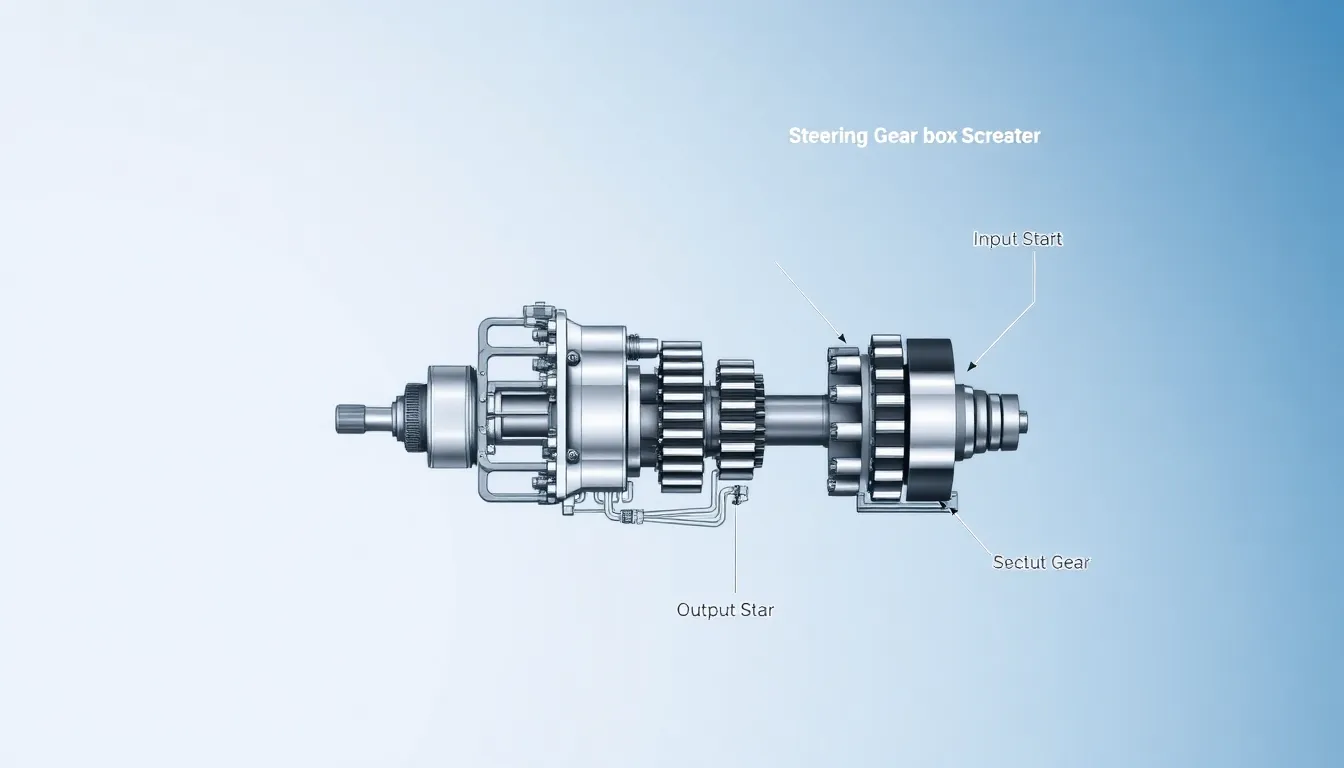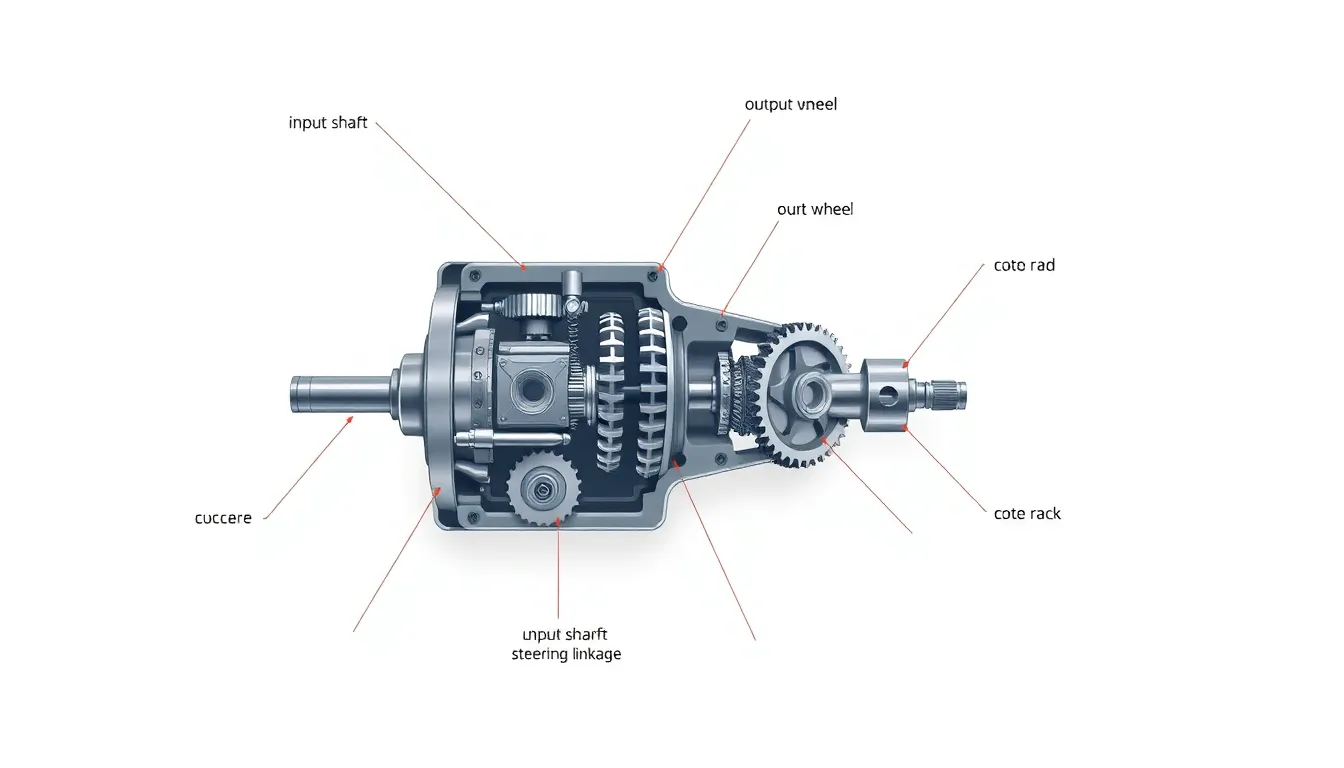Table of Contents
ToggleEver wondered how turning your steering wheel translates into those precise movements of your vehicle? Enter the steering gear box: the unsung hero of automotive engineering. With all its gears and mechanics, it may look intimidating at first glance. But fear not. In this text, we’ll break it down, diagram by diagram, so you can impress your friends with your newfound car knowledge. That’s right. They’ll think you’re a steering system superstar. So, let’s immerse and navigate the twists and turns of the steering gear box together.
What Is a Steering Gear Box?

The steering gear box is a crucial component in your vehicle’s steering mechanism. It converts the rotational motion of the steering wheel into linear motion that turns the wheels. Picture this as a translator for the steering wheel’s movements. Without it, driving would be as chaotic as trying to communicate with someone who only speaks Klingon. Essentially, the gear box ensures that you can guide your vehicle smoothly and efficiently.
In most vehicles, you’ll find either a recirculating ball or a rack and pinion steering gear box. Each type has its unique characteristics, but they all serve the same primary function of directing your vehicle where you want it to go.
Types of Steering Gear Boxes
Understanding the different types of steering gear boxes is like learning which tool to use for a DIY project. Each type has its strengths and applications.
- Recirculating Ball Steering Gear:
This type uses a series of balls as a medium for steering. As you turn the steering wheel, the balls circulate, providing smoother movement and greater durability. It’s commonly used in larger vehicles like trucks and SUVs due to its robustness.
- Rack and Pinion Steering Gear:
This is the more common type in modern cars. It features a gear (the pinion) that meshes with a flat bar (the rack). Turning the wheel moves the pinion gear which then pushes or pulls the rack, turning the wheels. This design offers improved responsiveness, making it a favorite for sportier vehicles.
- Power Steering Gear:
This variant uses hydraulic or electric assist to make steering easier. It’s perfect for maneuvering larger vehicles or for drivers who prefer a lighter steering feel.
- Manual Steering Gear:
As the name suggests, this type does not use any power assistance. While it’s often more straightforward, it can be heavy and requires more effort, especially at low speeds.
Components of a Steering Gear Box
Let’s dissect the steering gear box and understand its key components. Think of it as pulling apart a sandwich to see all its delicious fillings.
- Input Shaft:
This is where the steering wheel connects to the gear box. The driver’s movements begin here.
- Output Shaft:
The output shaft transfers the gear box’s motion to the steering linkage. This is what eventually moves the wheels.
- Gears:
These work together to convert the steering wheel’s rotation into the lateral movements of the output shaft.
- Bearing:
Bearings reduce friction, allowing smoother operation of the parts within the gear box.
- Housing:
This encases all the components, protecting them from dirt and damage. With everything neatly tucked inside, it ensures your steering gear box operates efficiently.
Detailed Explanation of a Steering Gear Box Diagram
The steering gear box diagram might look like a puzzle to the untrained eye, but it holds all the secrets to its operation. At the center, you’ll often see the input shaft connected to the steering wheel. Surrounding it are intricate gears that work together, demonstrating their teamwork to help smooth steering.
- Input Shaft:
Illustrating how driver input is received.
- Gears and Mechanism:
This area shows the engagement of the pinion and rack, or other gear configurations based on the type.
- Output Shaft:
Connecting the movement to the wheel, the diagram usually displays its connection to the steering linkage directly.
- Flow of Power:
Diagrams often indicate how power steering fluid flows through the system, enhancing performance when required.
By breaking down the diagram into components, one can easily understand how their vehicle responds to steering input, making that trip to the mechanic a little less daunting.
Common Issues and Maintenance Tips
Like any other part of a vehicle, the steering gear box is not immune to issues. It’s essential to keep an eye on its condition.
- Leaking Fluid:
If there are puddles under your vehicle, it might be a sign of a leak. Addressing this quickly can prevent more extensive damage.
- Excessive Play:
If the steering wheel feels loose or has excessive play, it could indicate wear or incorrect adjustment. Getting it checked can save you headaches later.
- Noisy Operation:
Unusual noises when turning can signal trouble. Listen for whining or grinding sounds: they might indicate a problem with the internal gears or fluid levels.
Maintenance Tips:
- Regularly check the fluid levels and top it off if necessary.
- Inspect for signs of wear and tear.
- Periodic alignment and balancing can help maintain optimal performance and prevent premature wear.







